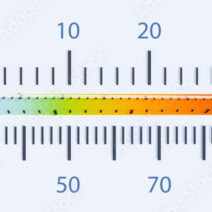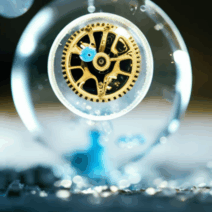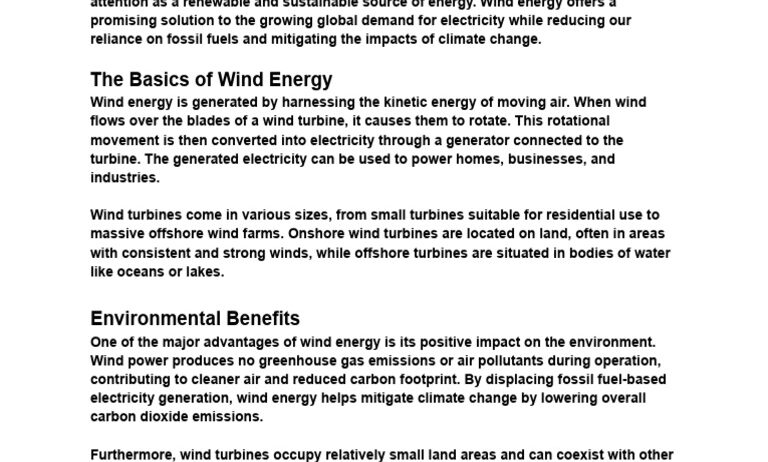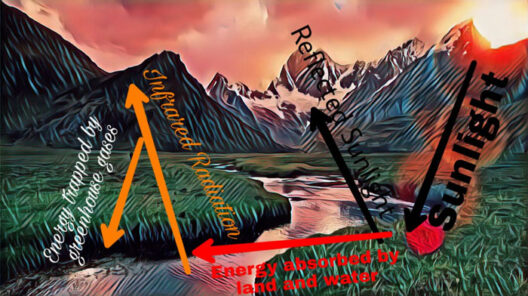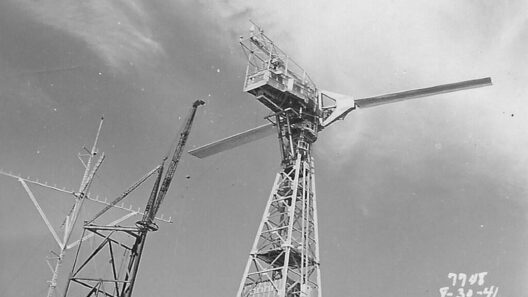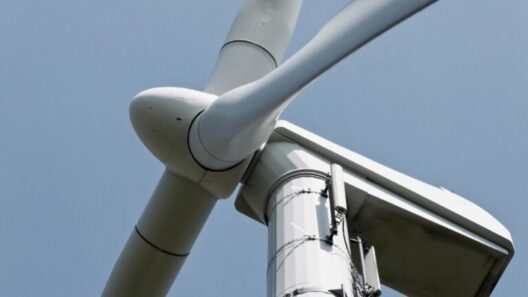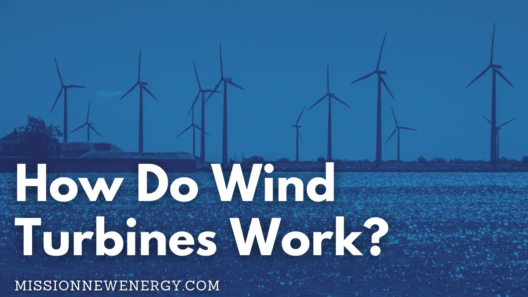Wind energy has emerged as a pivotal player in the quest for sustainable power. As more people grapple with the realities of climate change, the question becomes: How is wind energy obtained? This inquiry invites exploration into a fascinating and complex process that transforms the invisible force of wind into usable electricity. What if we could tap into the very atmosphere around us? This transformative energy source, while abundant, poses challenges that require innovative solutions. Let’s delve into the intricate steps involved in harnessing wind energy.
Your journey begins with understanding the wind itself. Wind is created by the uneven heating of the Earth’s surface by the sun, resulting in variations in temperature and pressure. Warm air rises, while cooler air sinks, leading to air movement that we experience as wind. The potential for energy generation from this natural phenomenon is immense, especially in areas where wind currents are consistent and strong. But how do we convert this kinetic energy of moving air into electrical energy?
To visualize this process, consider a wind turbine, the iconic symbol of modern renewable energy. These towering structures are engineered to capture the kinetic energy of wind, transforming it into mechanical energy and, subsequently, electrical energy. The anatomy of a wind turbine is crucial for understanding its function.
The Anatomy of a Wind Turbine
At its core, a wind turbine consists of several key components: the rotor blades, the nacelle, the tower, and the foundation. The rotor blades are designed aerodynamically to maximize wind capture; as the wind sweeps across them, they rotate. This rotation is converted into mechanical energy in the nacelle, a compartment that houses vital mechanical components. Generators within the nacelle then convert this mechanical energy into electrical energy.
The height of the tower plays a critical role too. Taller towers can harness stronger winds found at greater altitudes, thereby increasing the efficiency of energy generation. Foundations provide stability and support, ensuring that the structure withstands various environmental conditions. The intricate collaboration of these components is essential to the effective conversion of wind energy.
Once the turbine is operational, the generated electricity proceeds to the next phase: connection to the electrical grid.
Transmission: From Turbine to Power Grid
The electricity generated by the wind turbine is alternating current (AC), which must be transformed if it is to be utilized effectively. A step-up transformer increases the voltage of this electricity, allowing it to travel long distances through power lines with minimized losses. This process is not without its challenges; integrating wind energy into the existing power grid necessitates sophisticated management systems to balance supply and demand.
Modern power grids are designed to accommodate a diverse range of energy sources, including traditional fossil fuels and renewable sources like wind. However, the intermittent nature of wind – it doesn’t blow consistently – creates variability in power generation. Thus, energy storage solutions such as batteries or pumped storage hydroelectricity must be implemented to ensure a reliable power supply.
Renewable energy advocates often pose the intriguing question: Can wind energy completely replace fossil fuels? While the answer is still evolving, the potential is vast. As technological advancements continue to unfold, the efficiency of wind energy systems is increasing dramatically. But what about the challenges we face in harnessing this formidable resource?
Challenges in Harnessing Wind Energy
Despite the clear benefits of wind energy, several hurdles need to be addressed. One prime concern is the environmental impact of wind farms on local ecosystems. Bird and bat mortality due to collisions with turbine blades has raised alarms among environmentalists. Furthermore, the land footprint required for extensive wind farms can disrupt habitats and land use.
Another challenge lies in public perception. NIMBYism (Not In My Back Yard) often hampers initiatives, as communities fear the noise, visual aesthetic, and potential disruptions associated with wind farms. Overcoming these perceptions is crucial for expanding wind energy infrastructure.
Economic factors also play an important role. While the initial investment for wind energy projects can be substantial, the long-term savings on fuel and operational costs are significant. Policies and incentives that favor renewable energy can facilitate this transition, making wind energy more appealing to investors and communities.
As the world shifts toward cleaner energy alternatives, it becomes essential to educate the public about wind energy’s advantages and address the accompanying challenges. This will foster community acceptance and encourage proactive participation in the transition to a sustainable energy future.
In conclusion, harnessing wind energy involves intricate processes that convert the kinetic force of the wind into a reliable power source. From the aerodynamic design of turbines to the transmission of electricity across power grids, each step brings us closer to a cleaner, more sustainable energy future. As we confront climate change and advocate for greener solutions, understanding the complexities and challenges of wind energy will empower individuals and communities to drive meaningful change.
